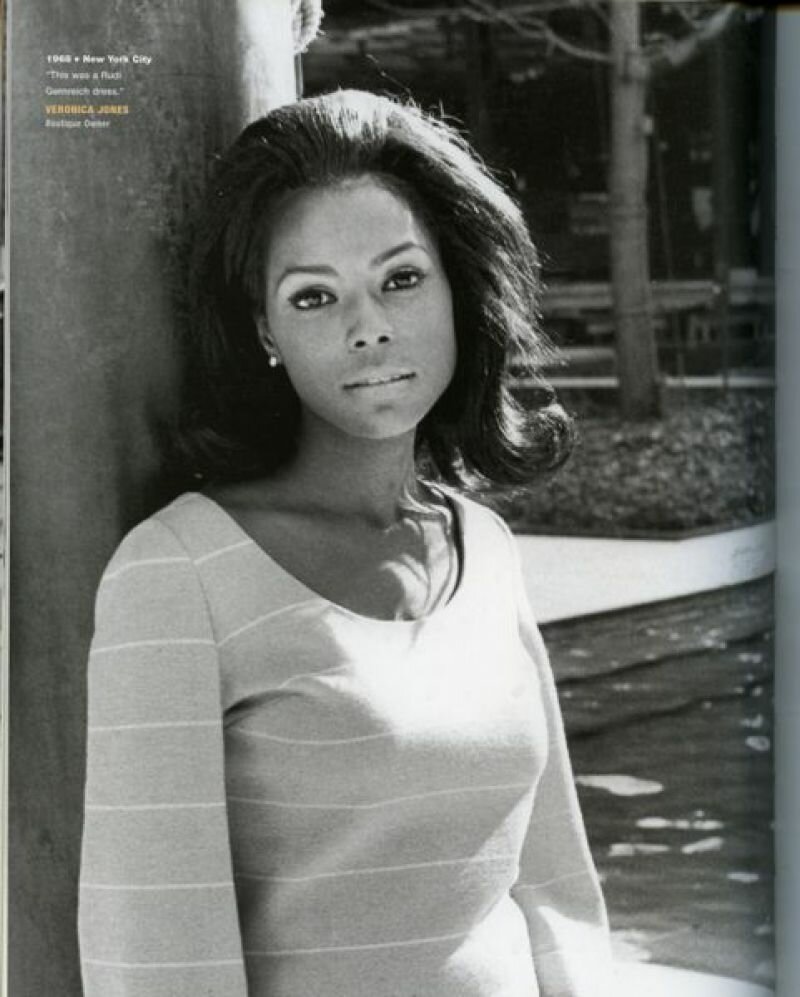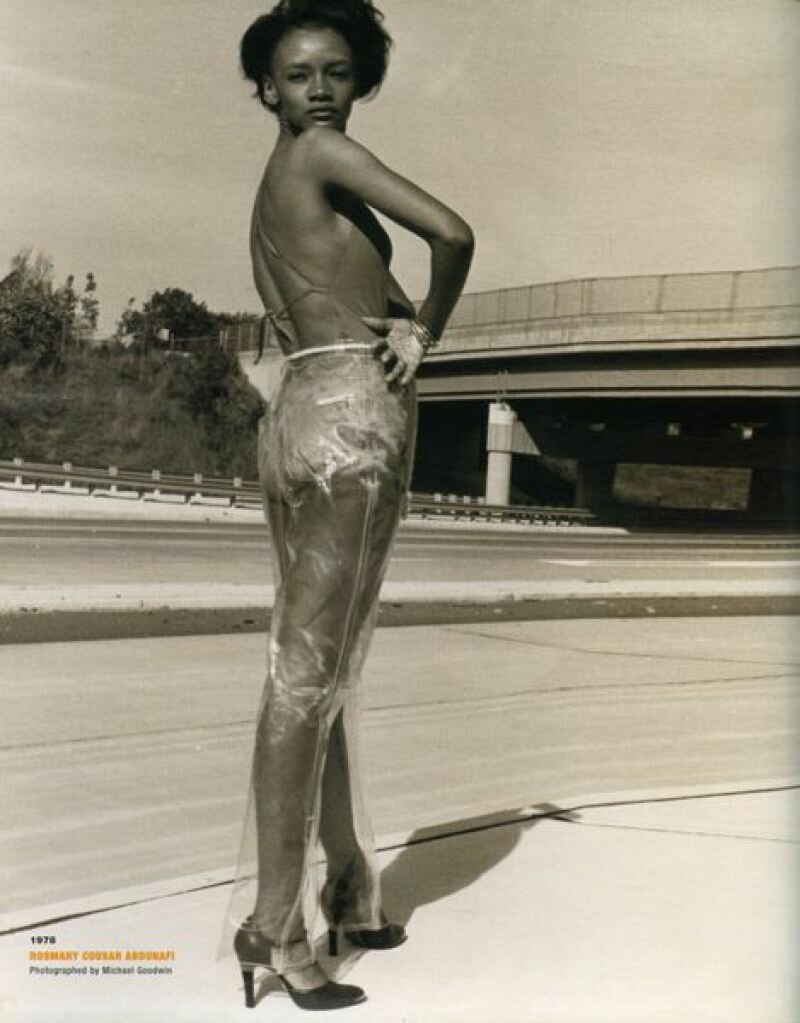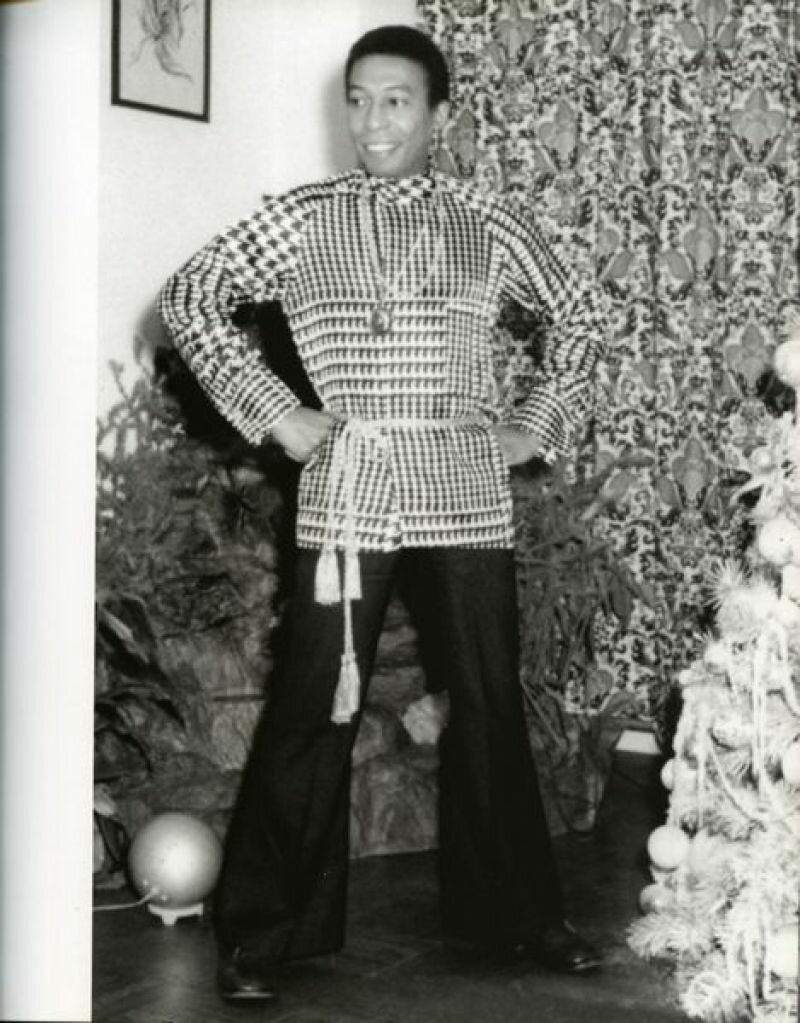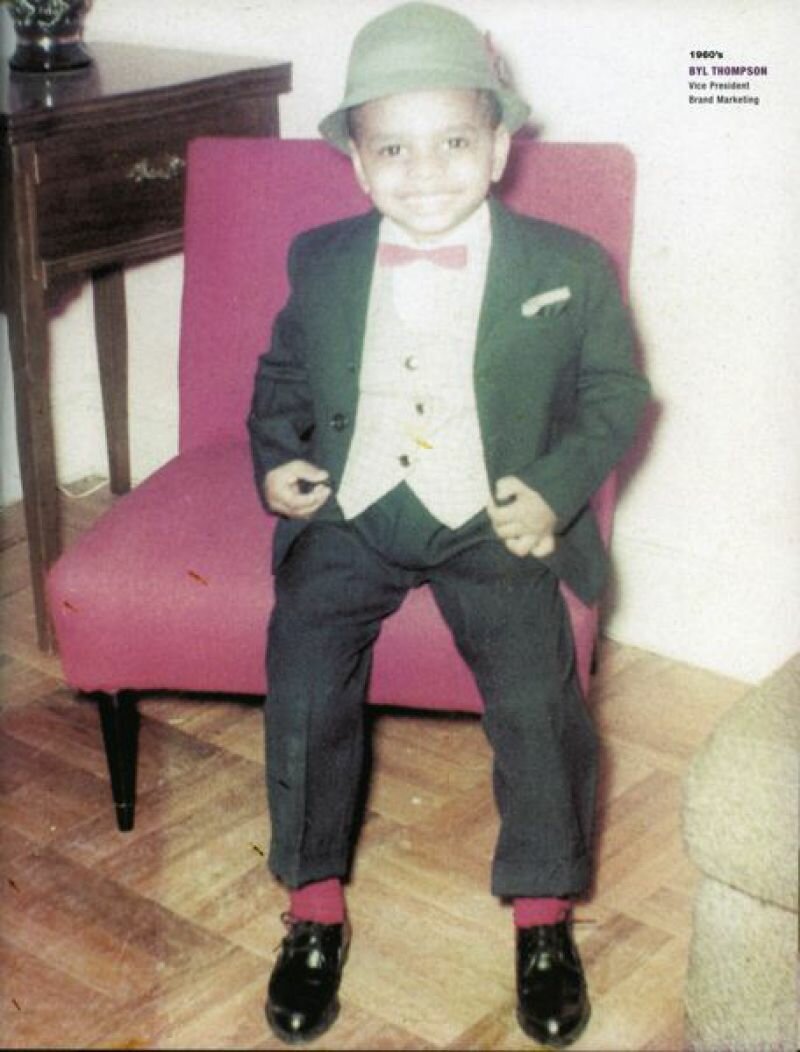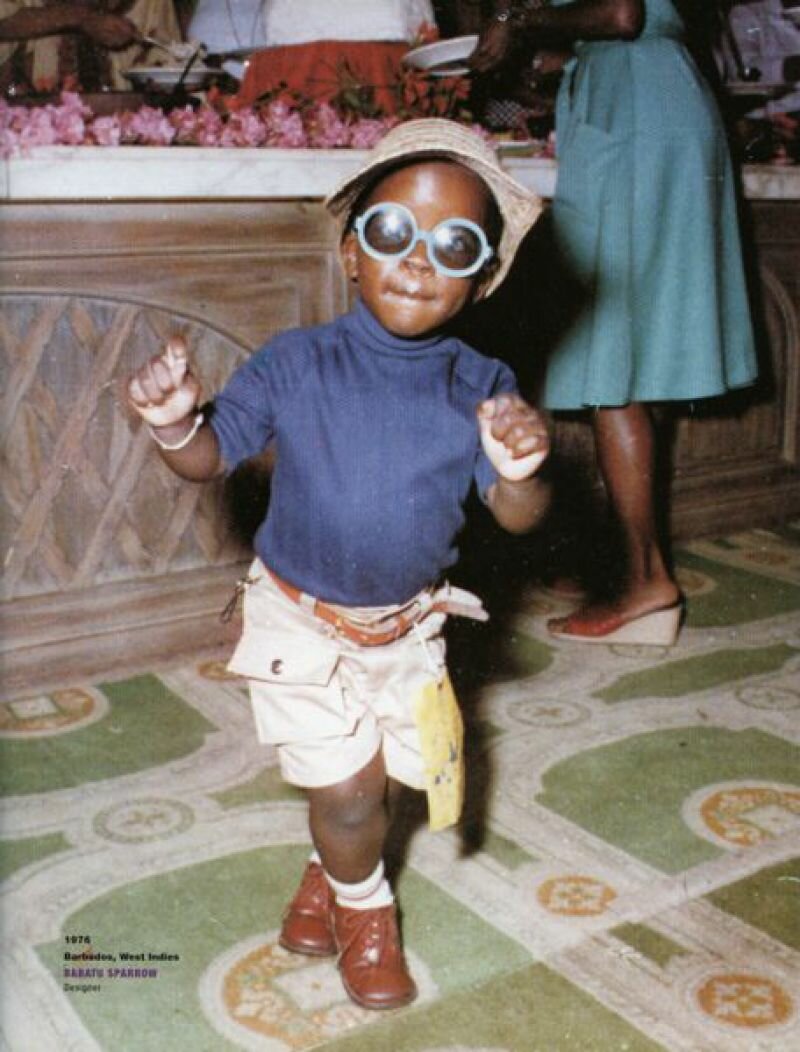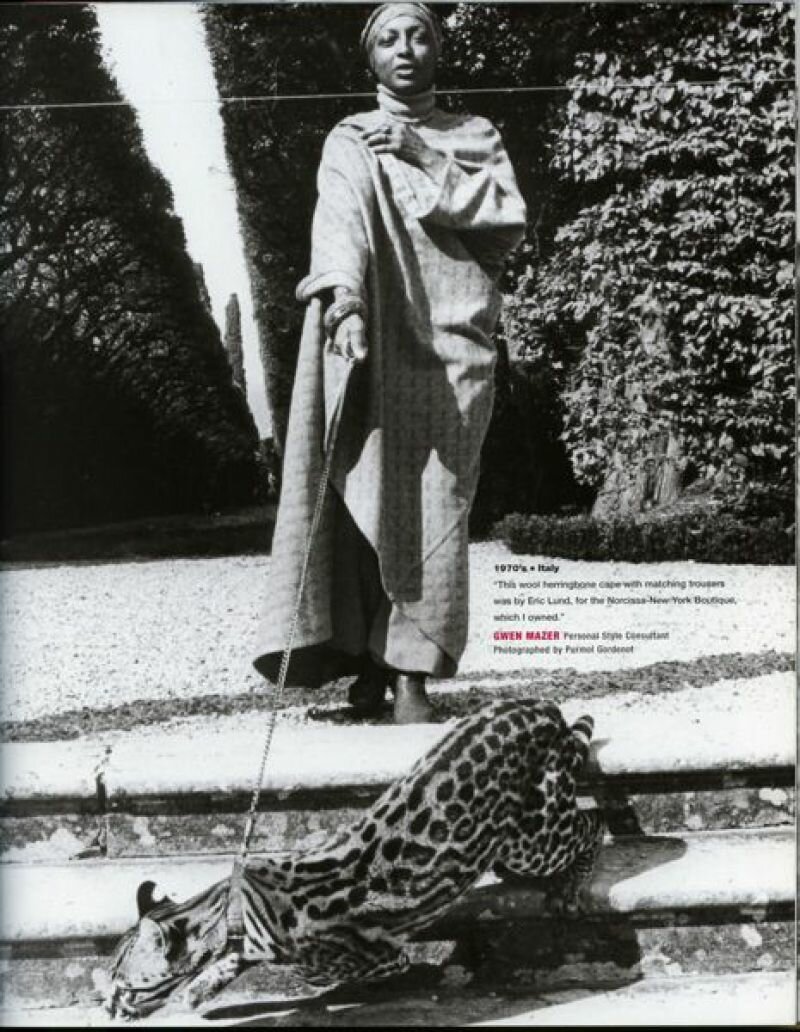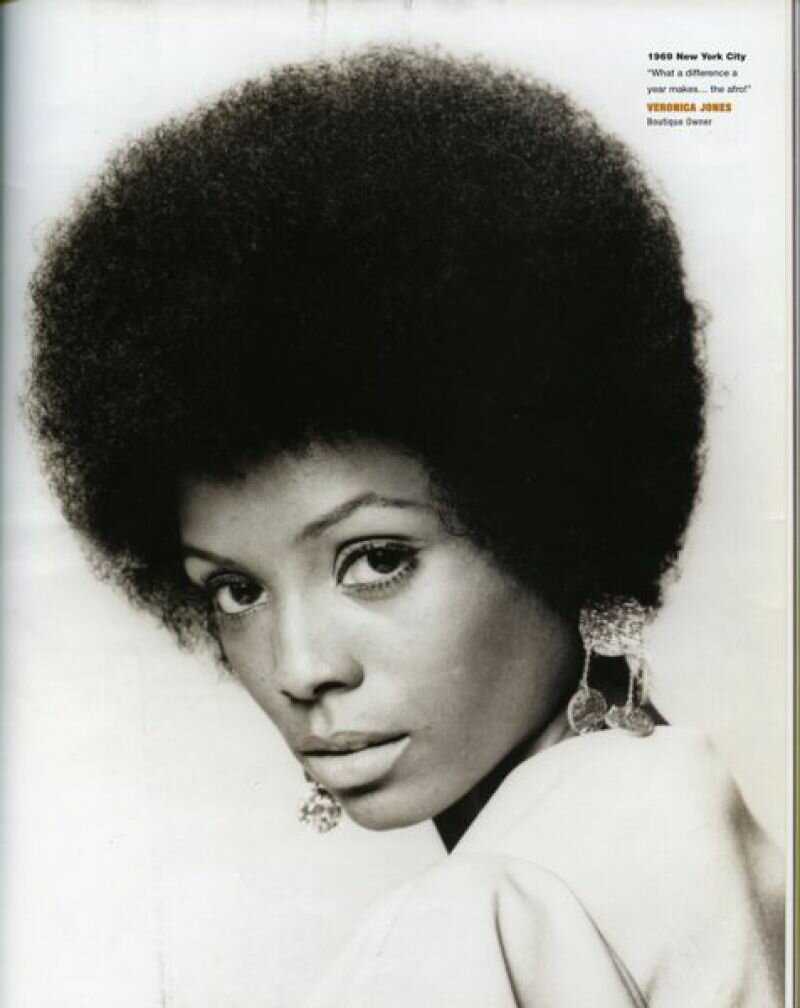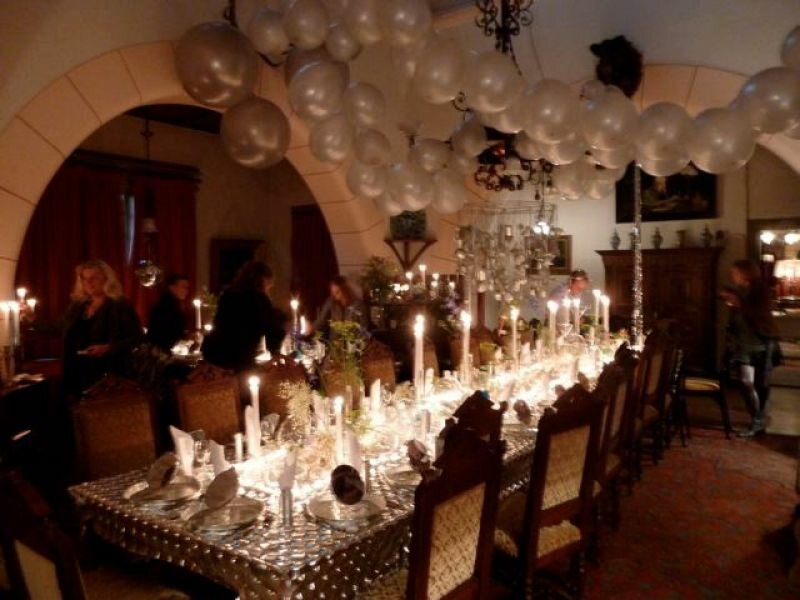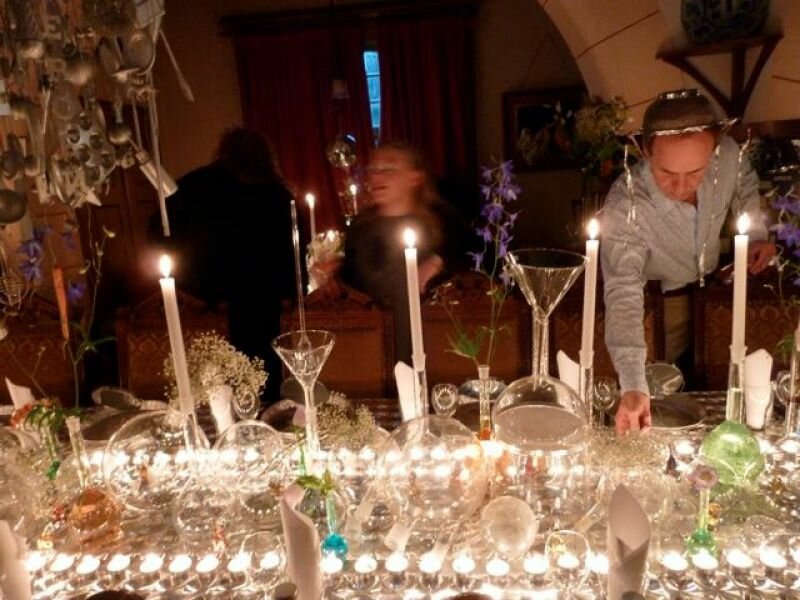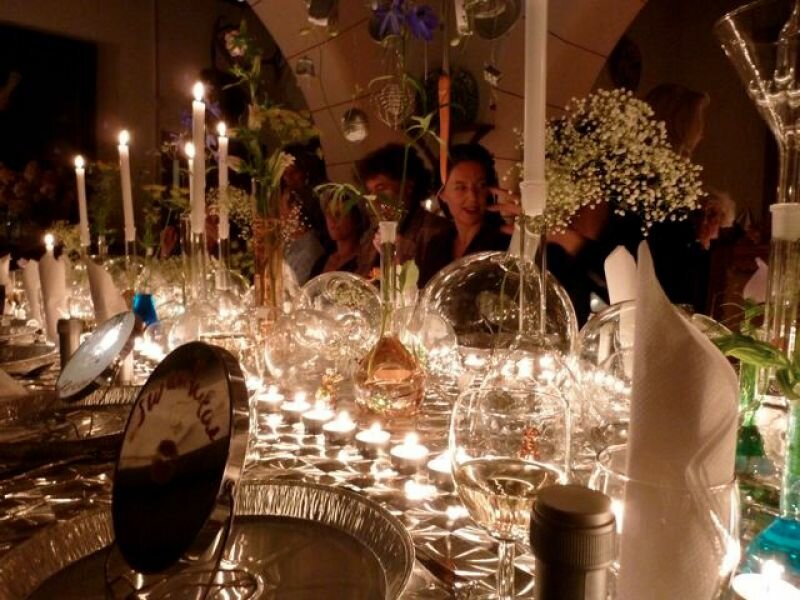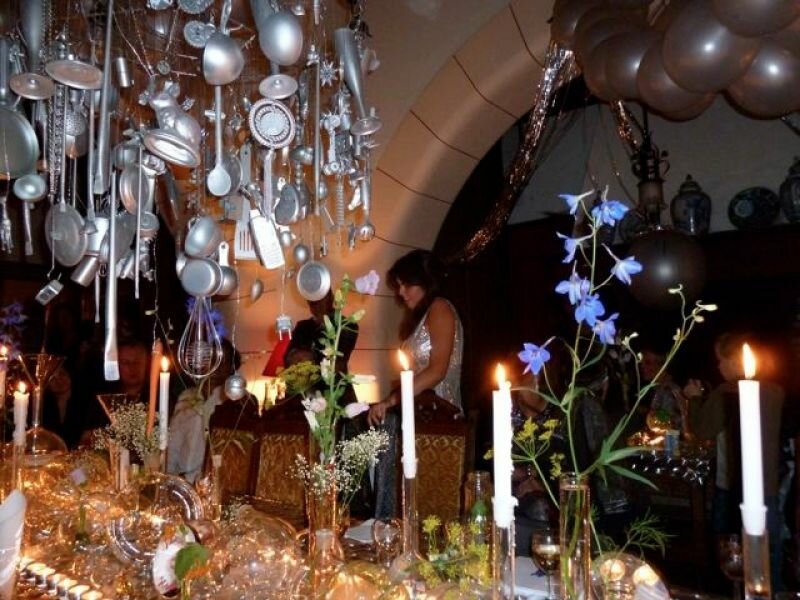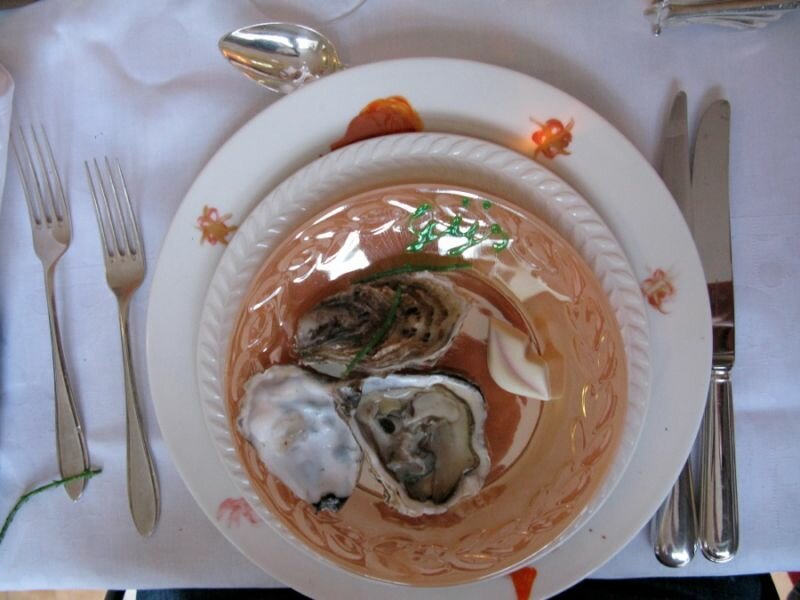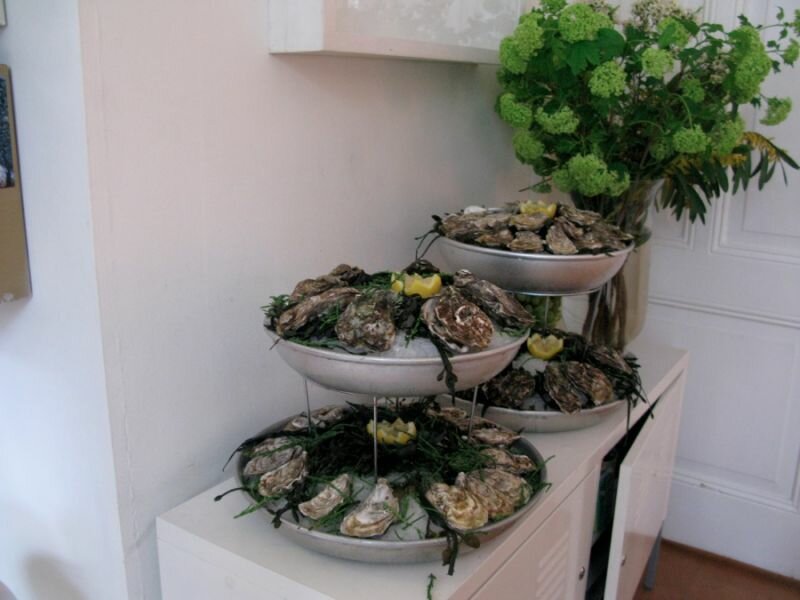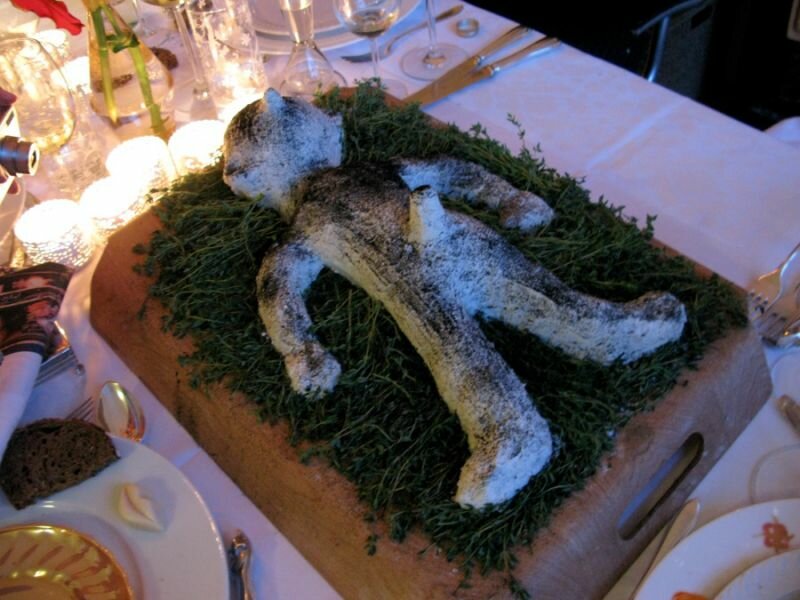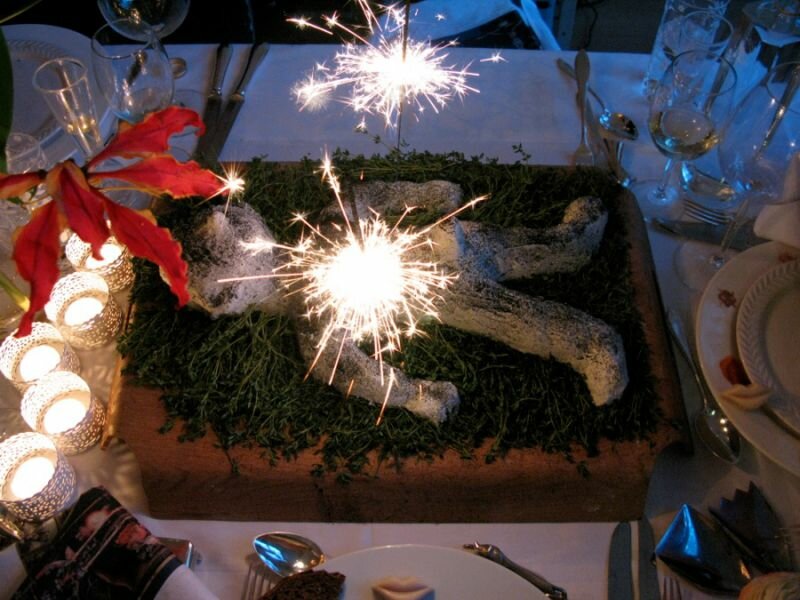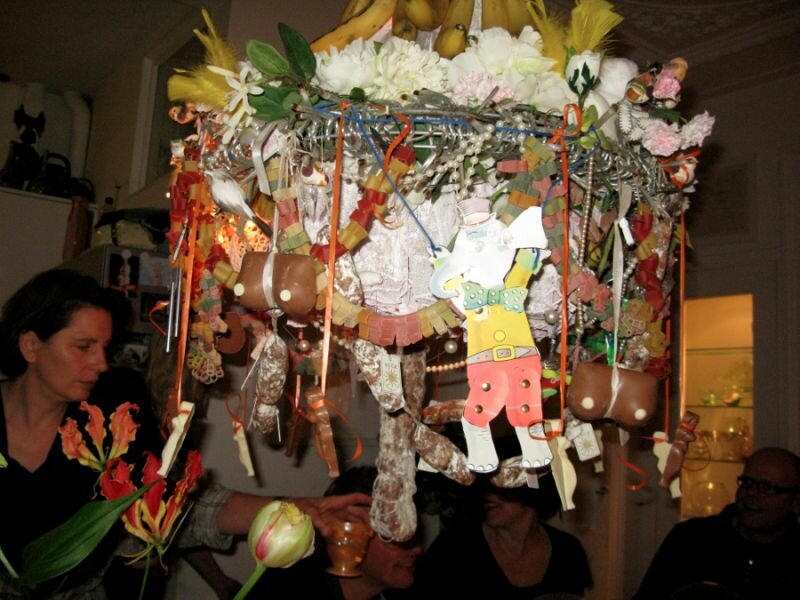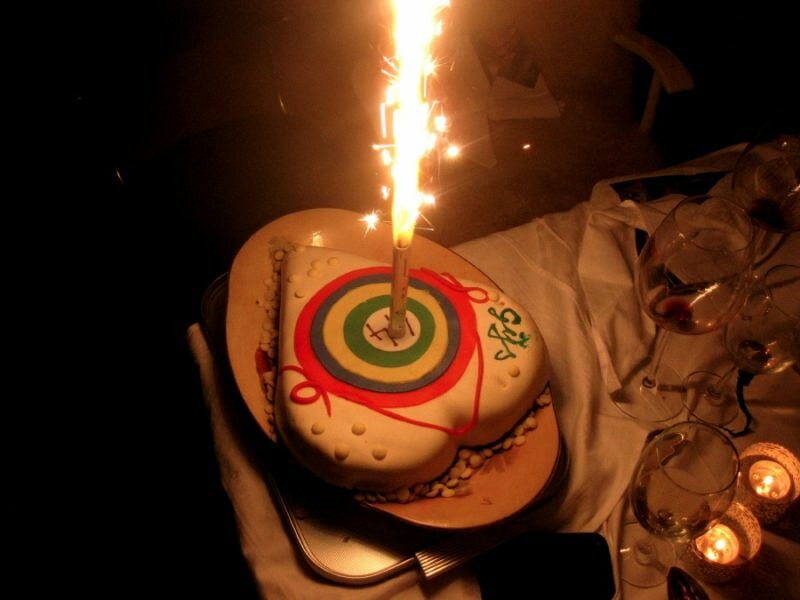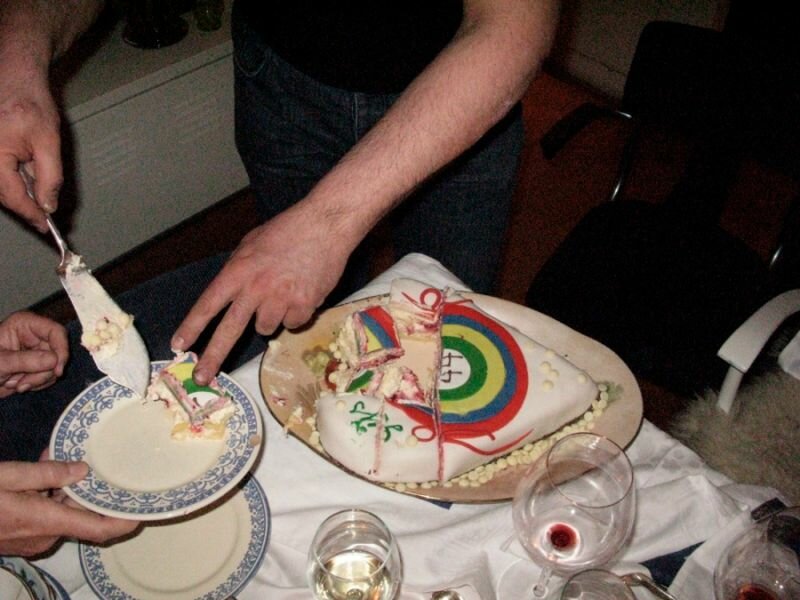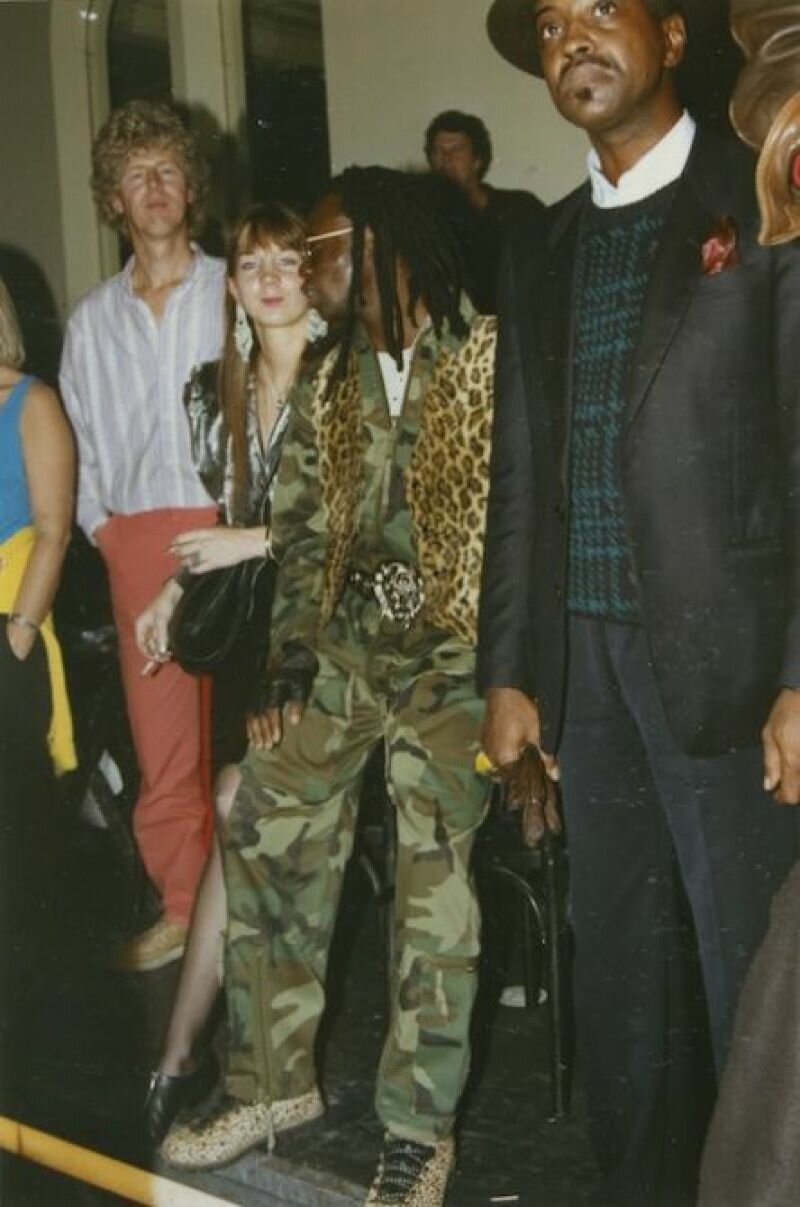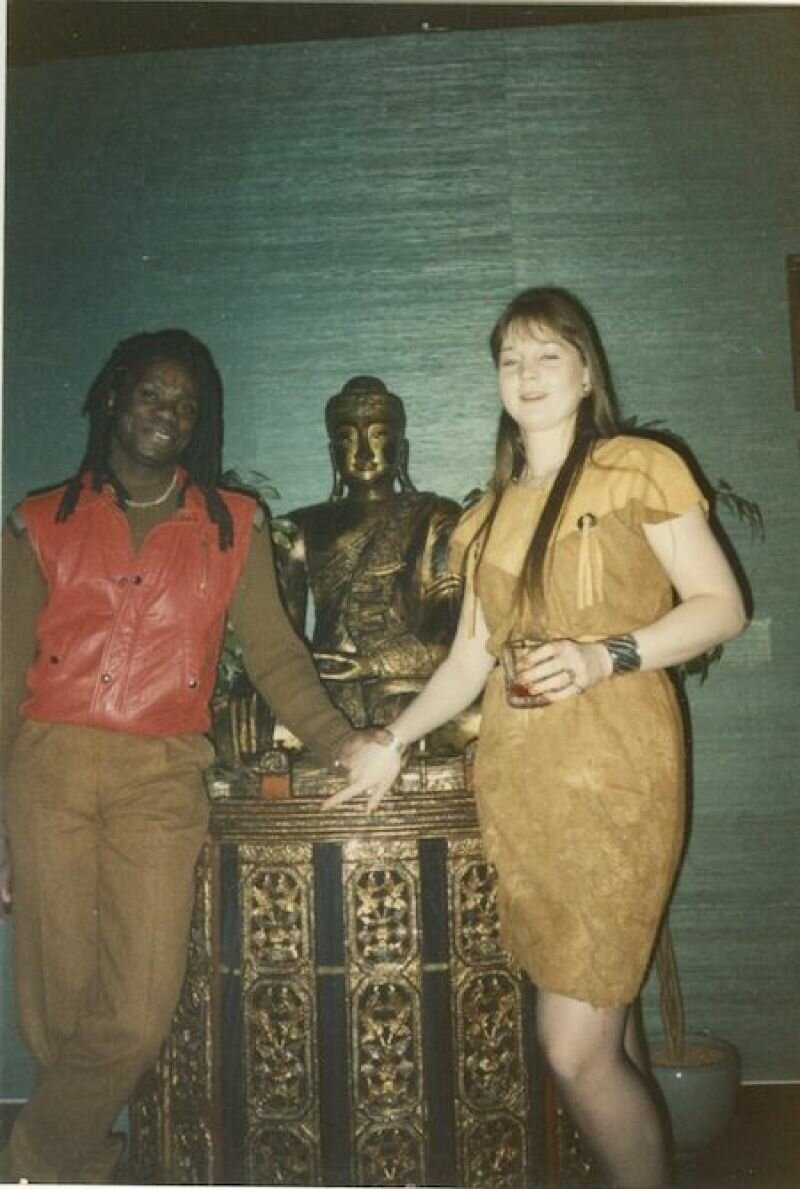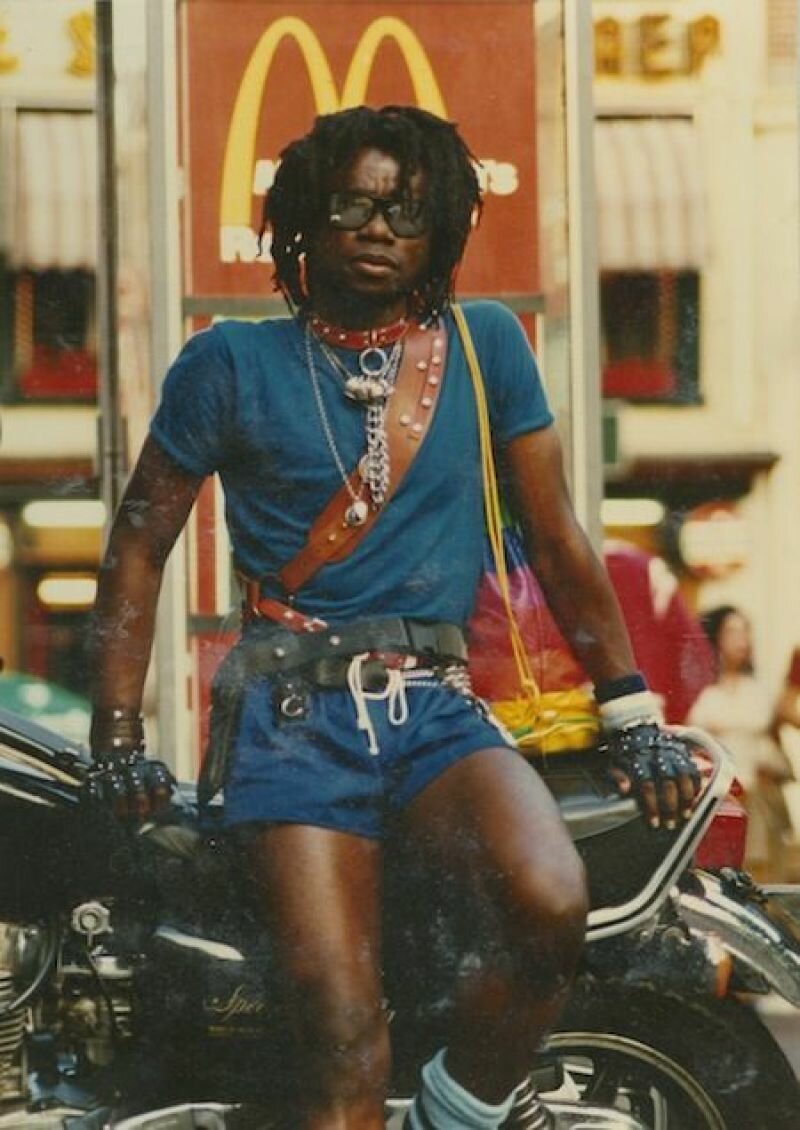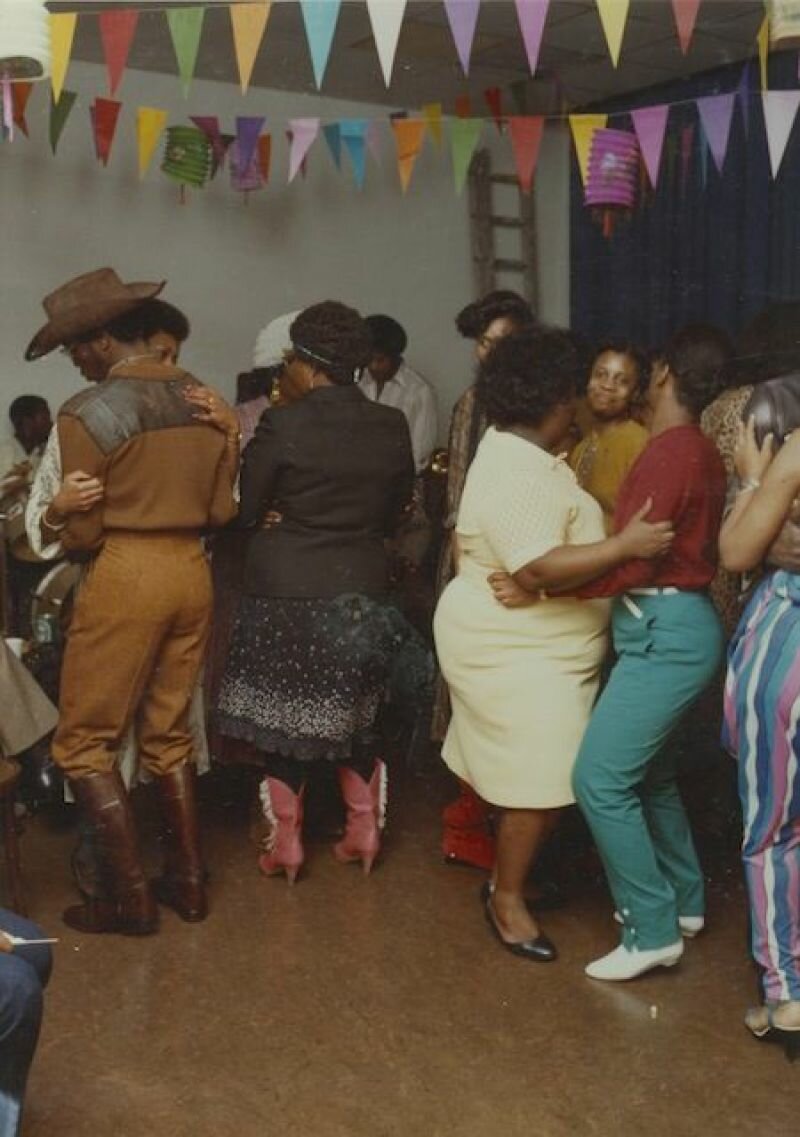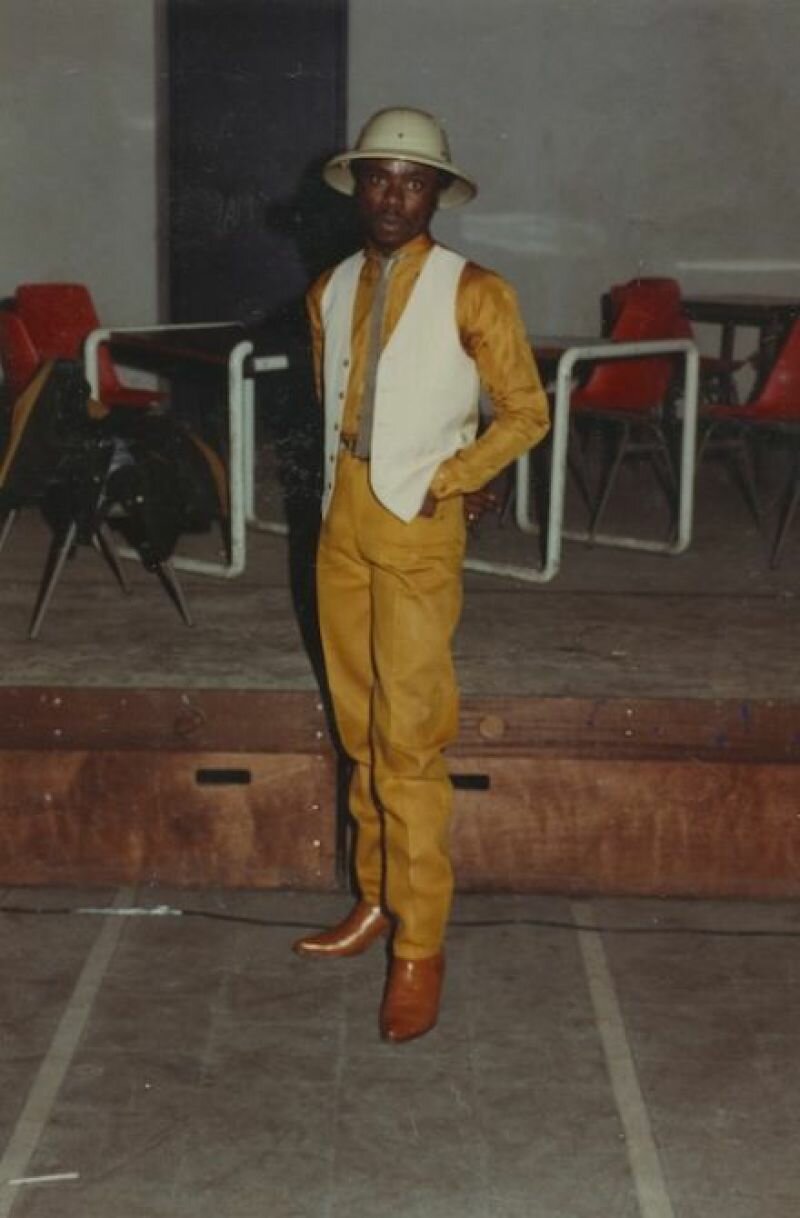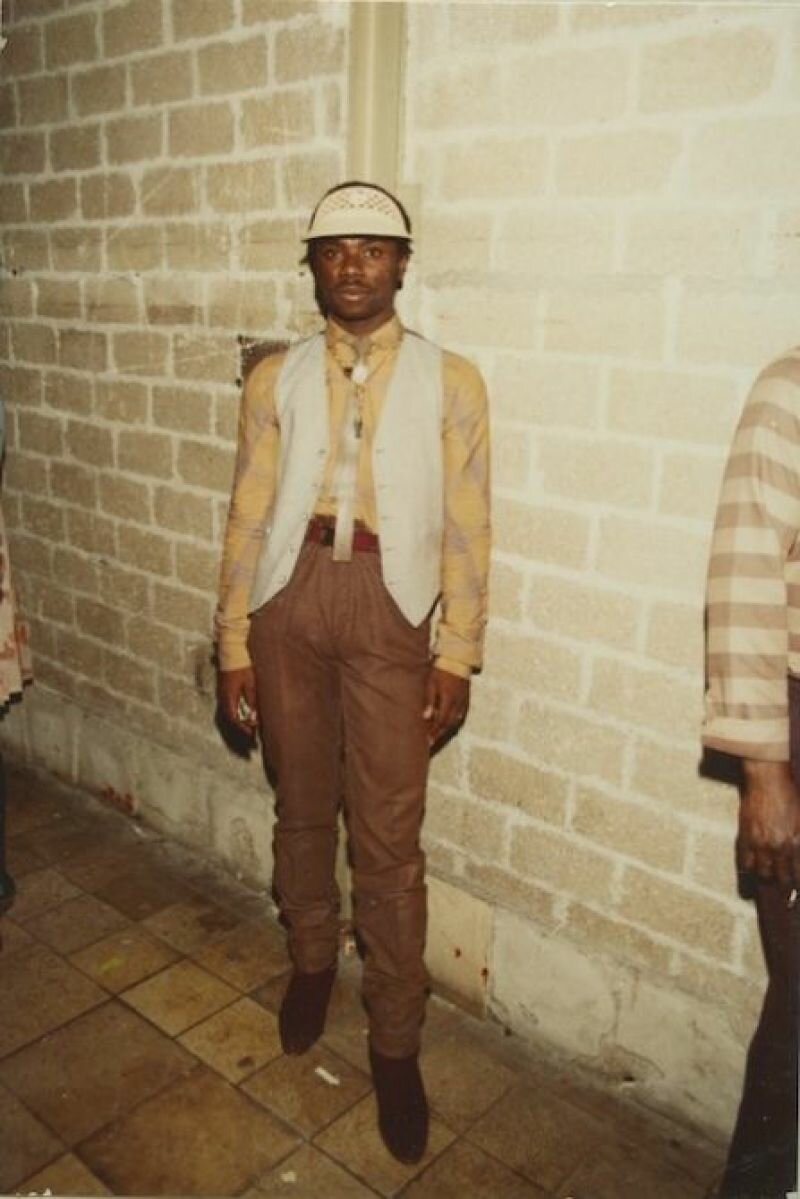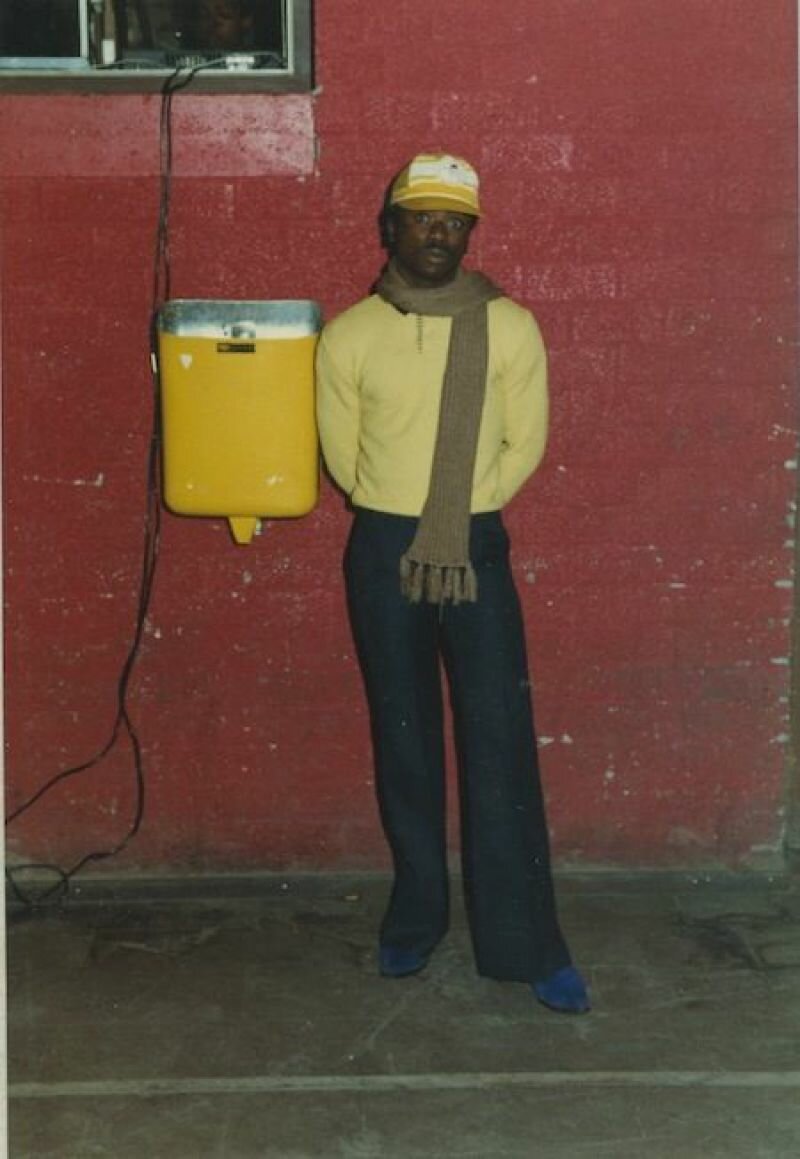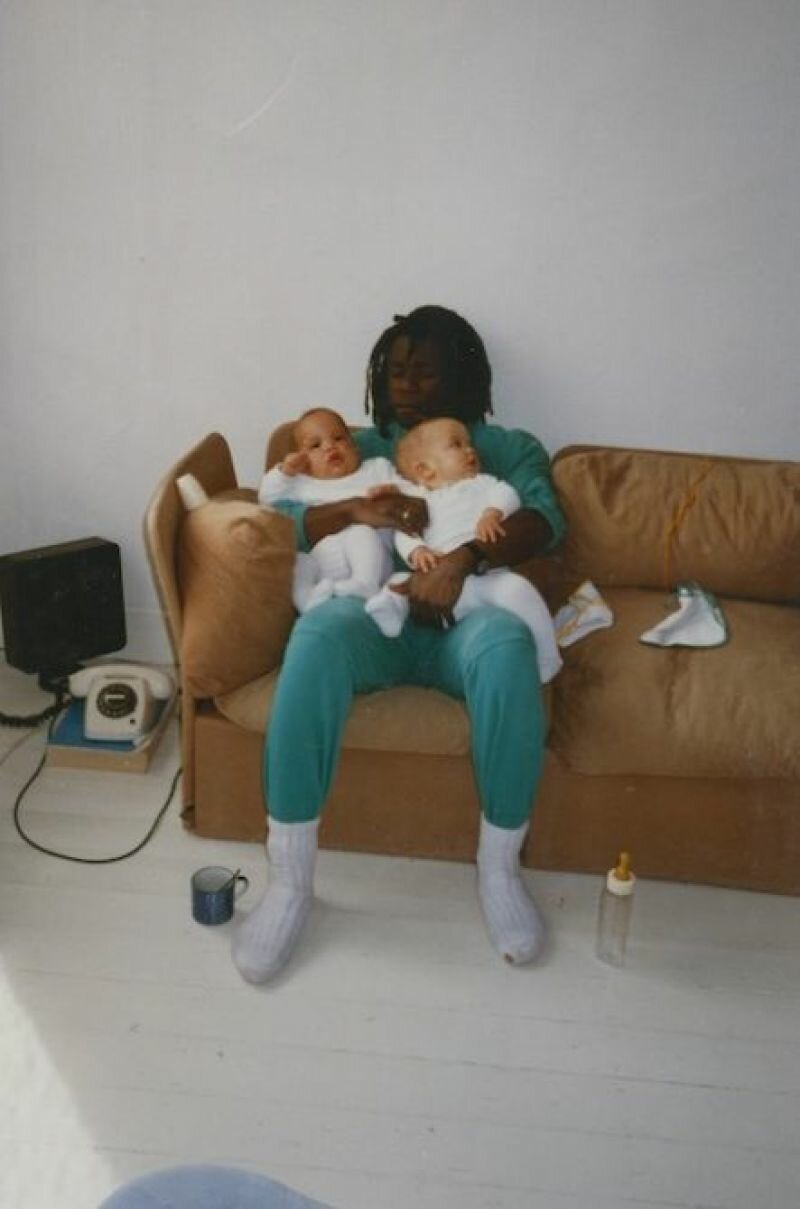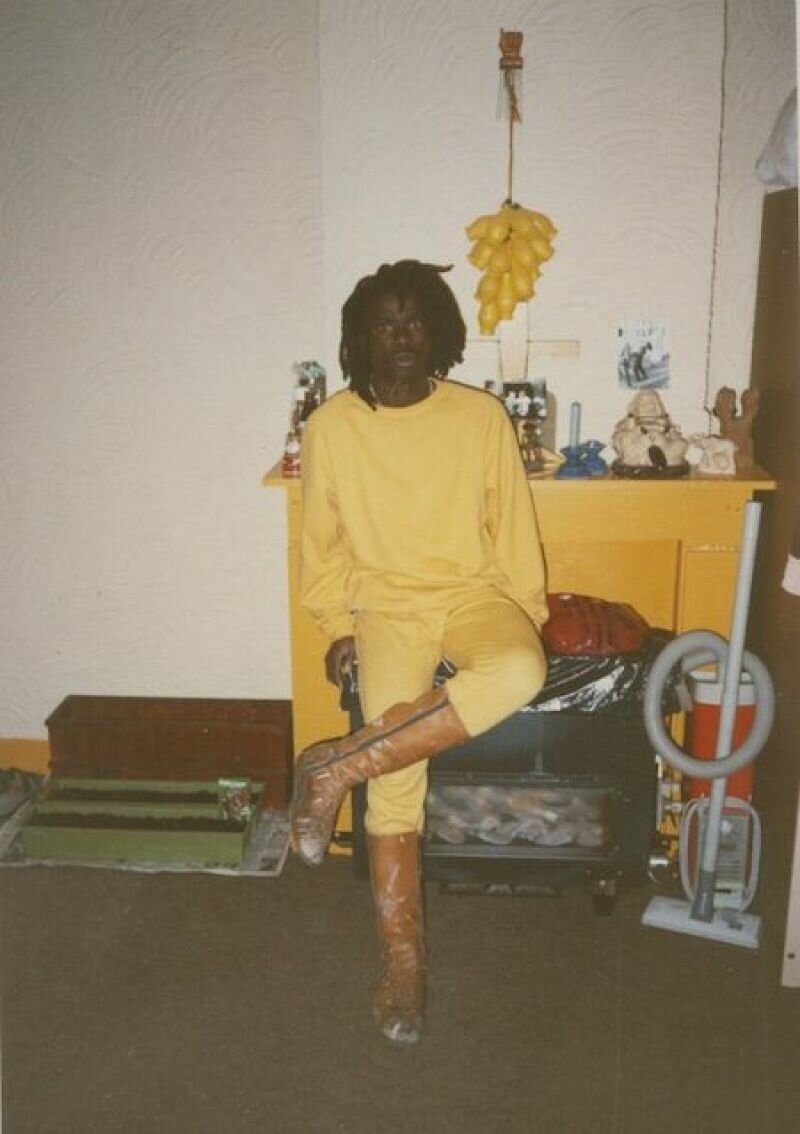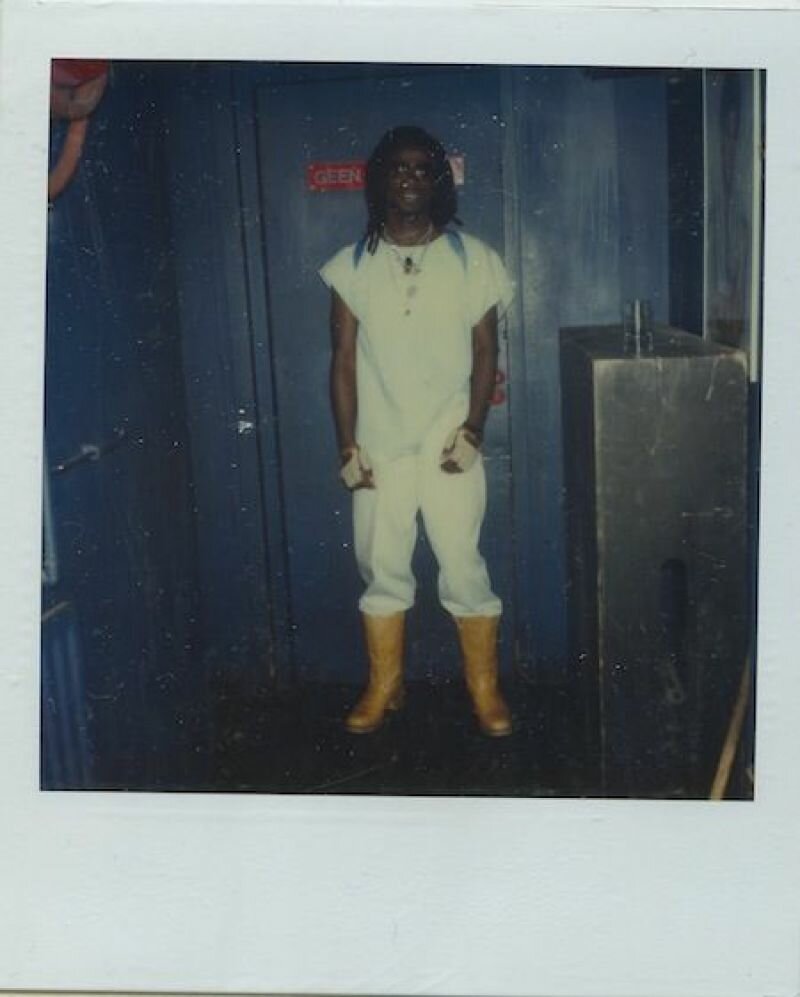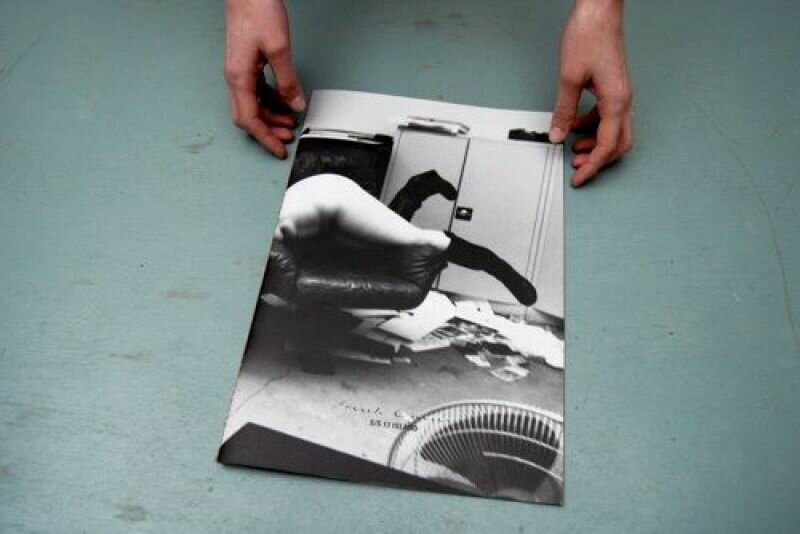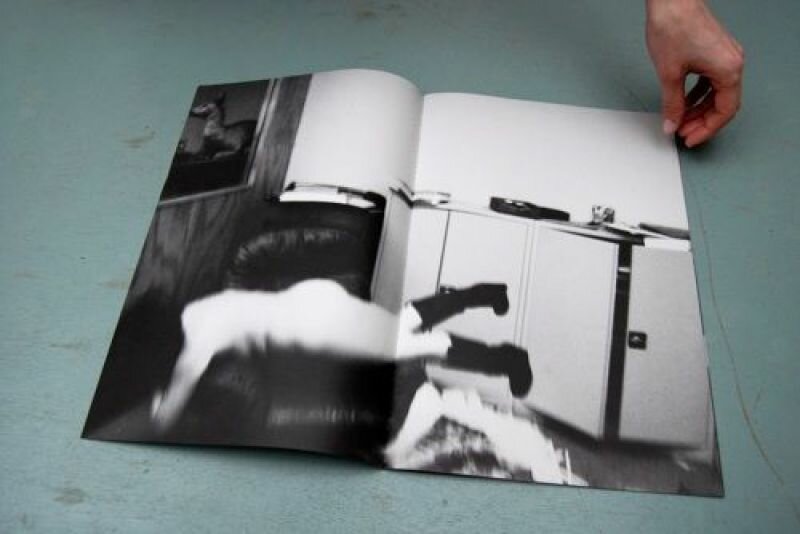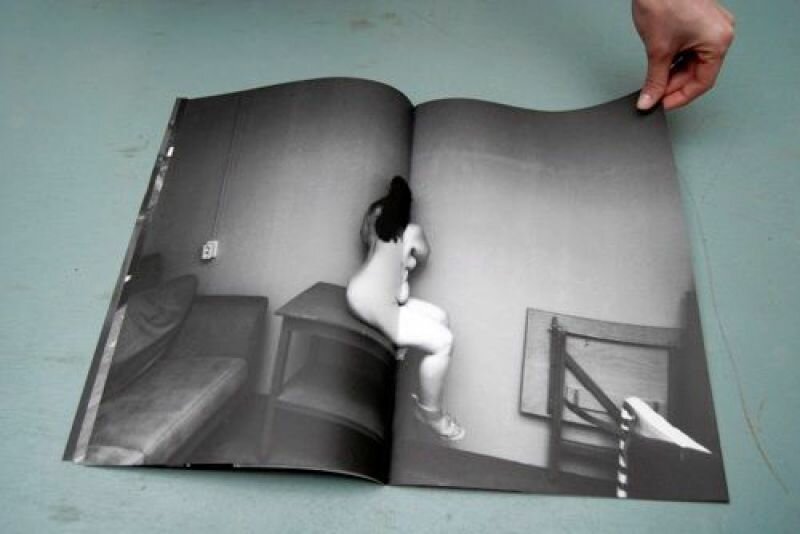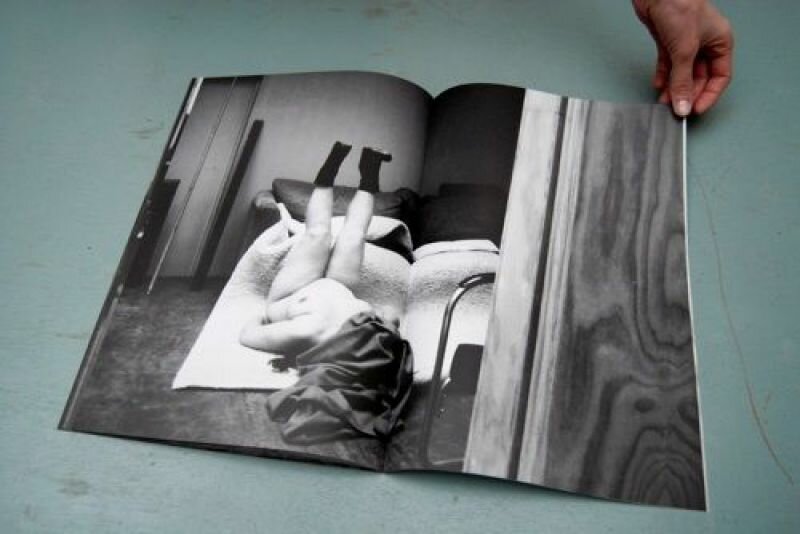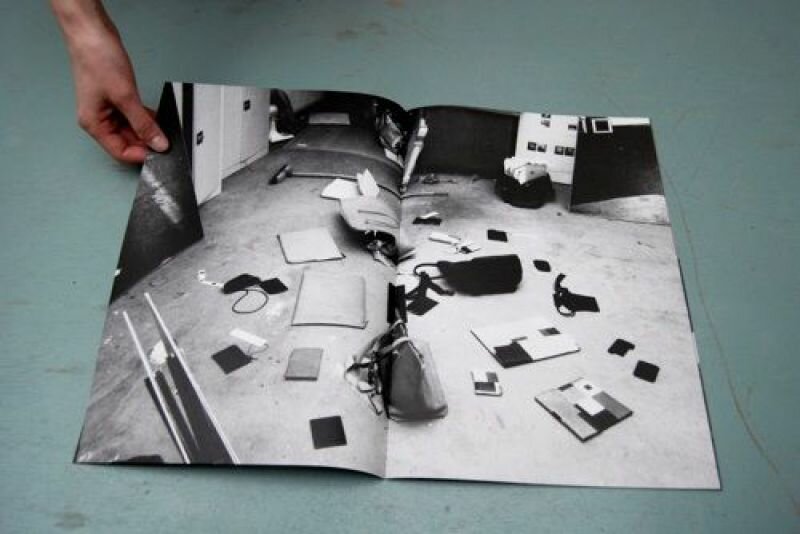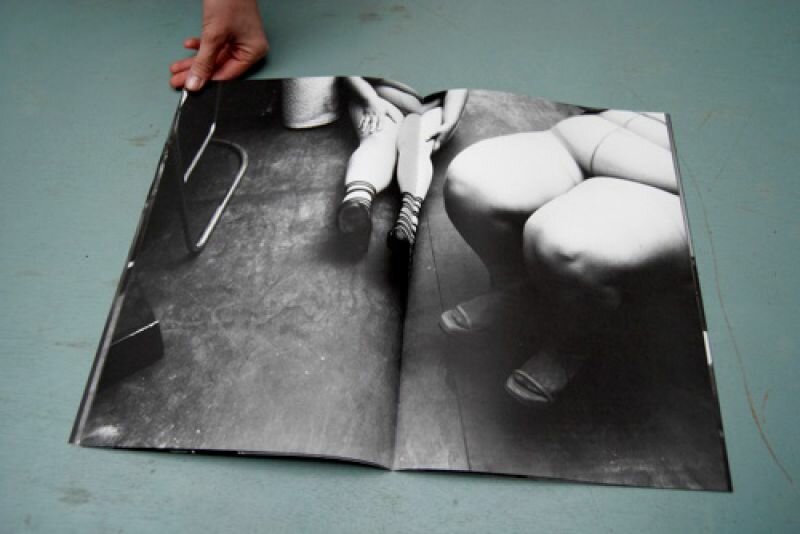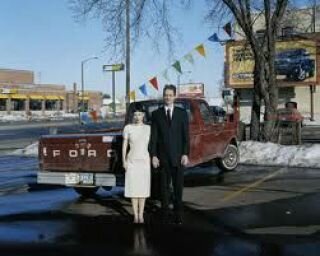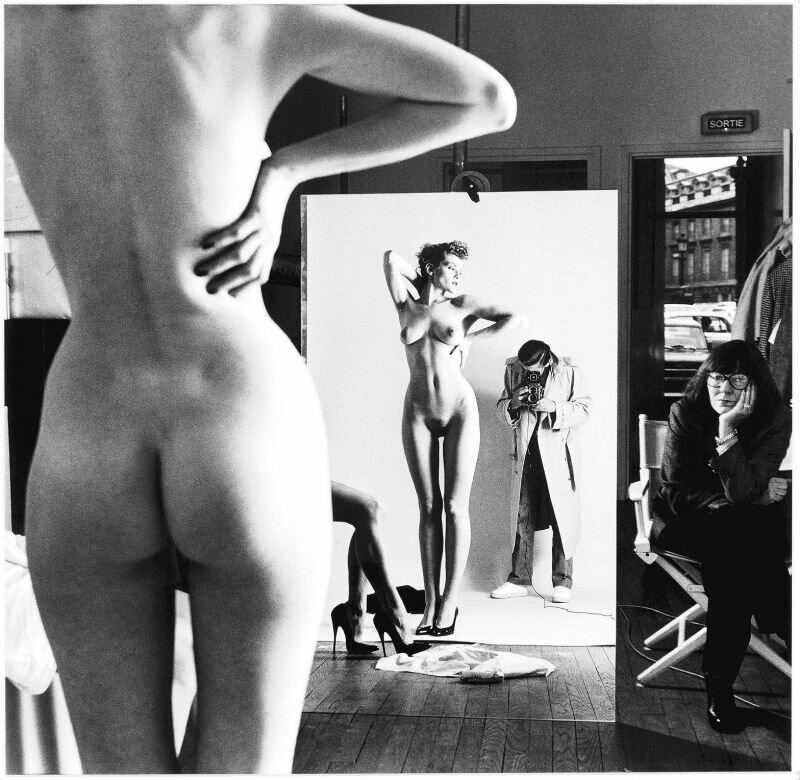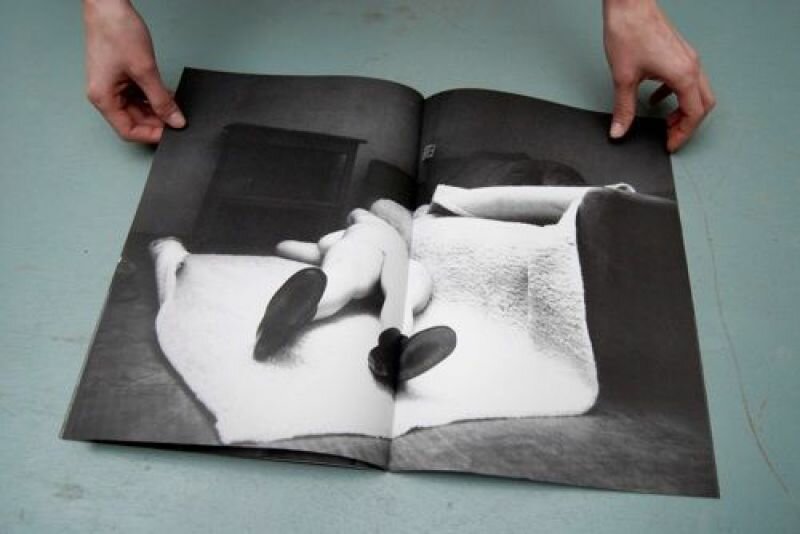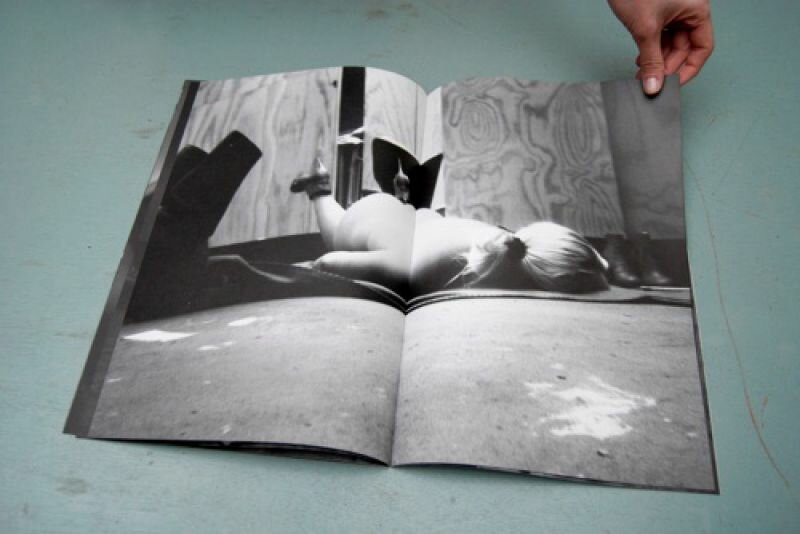Fashion changes it's colour, theme and look every season often at the speed of a falling star. Within this frantic hurry, some things tend to go unnoticed.
Fashion designer Rick Owens asked artist Paul Kooiker to make a look book and even before someone looked over it, it was already out of fashion. Owens is considered a strange gothic bird within the fashion world. His clothes are tough, wearable, put up with big areas and most of the time black. The shoes often look like army boots and the jackets are styled like motor jackets. Owens clothes breathe a tough, androgynous erotic look yet his main customers are women either from Paris or Tokyo often a slim size 36.
He does things his own way. You will never see his clothes advertised in the pages of Vogue or Elle, why? Because he doesn't advertise. He describes his style: ‘I try to find very classical and graceful lines but in a primitive way.’ He doesn't hold a degree in fashion and after two years of art school he immersed himself into the nightlife of Los Angeles. ‘I was a part of this wicked Hollywood Boulevard hustler bar world. I hung around people like Goddess Bunny, a dwarf friend of mine, and Mr. Beanbag in super sleazy, crystal, tranny hustler bars just off Hollywood Boulevard, a couple of blocks from my studio. It fitted in with my aesthetic of broken idealism.’1
Owen’s clothes with its raw edges seem to be attractive for fashion people in a cool, fancy centre. In an interview with the German magazine Plastik he mentions Kooiker and Brancusi as two sources of inspiration. A strange couple: the classic, pure eternal values seen in the sculptures of Brancusi contrasting against the photo's from Paul Kooiker, where women pose in messy, raw and unattractive scenes. His floor is still covered with boxes of Polaroid's he used to make the test photographs. Owens then invited Paul Kooiker to make a look book from his accessories. Eventuality Kooiker realised he was allowed to do what he wanted,'I had more freedom then I get from a gallery owner', chuckled Kooiker.
Even though the boundaries between art and fashion seemed to have disappeared, there are still other principles in fashion. Where artists seek for the boundaries of shame, beauty or social moral. Fashion always stays within the areas of seduction, the look of getting a positive response.
If Viktor and Rolf change the body structure by letting the body spill out in unwanted places, the models will walk on the catwalk like the hunchback of the Notre Dame. But that won't be a reason to turn away. The models are beautiful and you know that they have perfect, slim bodies underneath their clothes. It is a game when the eye generously rewards, instead of blocks. In the March edition of Vogue, a pregnant model poses in the report Centre of Attention that focuses on the naked waist. The pregnant abdomen looks beautiful and you know it will never become stretched or start to sag. To be more exact, the reader of Vogue has no reason to be afraid of these 'un-existing' imperfections. Guts in fashion is always appetizing. Behind every photo shot you find a team producing the concept to perfection. Even the sabotaging of this perfection is considered and that is what makes it boring and lifeless.
A fashion report I will never forget was with men working on an oil platform, all wearing beautiful dresses. So far from normality yet so close to it, the only difference being the men where wearing expensive haute couture dresses, there was no made up scenery. This rare moment where fashion walks into the unpolished reality, most of the time you see tropical islands lined only palm trees. Owen’s describes how he ‘wanted to make something beautiful and I find that most profound beauty is grounded within something real.’
In the time of the cross-over, time boundaries are softened and the mutual areas of disciplines get all the attention. The photographer Alec Soth produces the fashion magazine Paris-Minnesota and saw the invitation he received from Magnum as an opportunity to play with fashion. Still the concept remained week in his eyes: ‘the truth is that we did not have time for new ideas’. Working within a team also is hard for him. However the space between him and others is what fascinates him and that the tension seems to go away when you work in a team. Eventually Soth chooses to reveal the grey area between his own world and the world of fashion, Minnesota versus Paris. The photo shoots were held in his native area of south America, varying them between landscapes and portraits of locals.
Photographer Helmut Newton loved to work with models and fashion shoots. He worked with the very best teams, the best mannequins and the most expensive equipment. Why? Wouldn’t you if you had the chance?
Why you would not is shown in S/S 13 ISLAND from Paul Kooiker, the accessories look book from Rick Owens hardly shows a bag or shoe in it. The look book cover is of a woman leaning uncomfortably over an old leather seat on a twist leg? Her black hair hides her face and her belly is shown bulging and marked. She wears heavy black boots, forming a silhouette against the sky. On the ground lies a forgotten pile of photographs and in the background lurks an old filing cabinet. The second photo seems to be like the first but is not in focus, like a nervous assistant shaking on ladder had made it. The white areas of the blurry body and the white background dominate. The shoes are vague, black spots and then looking at the mess on the floor in the studio, you discover bags and wallets and then in the background the bulgy bag with thebookkeeping of the photographer. Women are laying on their fronts whilst putting their booted feet up in the air. The central part of the photograph reveals the soles of the boots, behind this you see a pile of soft, moist flesh. A number of thighs squished together to form a smiling line in the image. The cardboard box wrapped in ostentatious tape in which the expensive accessories were packaged remains. Pieces of paper are strewn everywhere. Each and every picture looks like a crime scene, an uncomfortable place, somewhere to avoid. It's a picture book that will scare away the viewer, rather than engage them. In this raw reality of the studio with the not so fashionable models the rationalisation of bags and shoes starts to unfold.
These are insane pictures, gritty, obscured, black and white images. Desperate and utterly human. Kooiker seeks the uncomfortable and his lookbook achieves this whilst turning away from the usual fashion vernacular. If you are already familiar with Kooiker’s work, you see how he falls back to his own style with this project. The studio with chunky models and the shoes that come with it. He has taken the shoes and bags and placed them within the context of art and then taken the imagery hostage. Kooiker first tested this with his phone, just to gain an idea and immediately saw the magic of the imperfect composition. He also shot the rest with his phone and then put the shoes and bags back in the boxes and then returned them. It was as simple as that.
I asked Kooiker how he dared to do that; "You don't always have to watch when you take a picture because that control is very annoying. You have to shoot straight from the feeling for that moment. It is intuitive and from that trust it then gives you something. Fashion needs loss of control.”
In Paris Minnesota you see a beautiful landscape. In the distance you will find a red bag resting in a on a pile of rocks . The bag is almost invisible but the landscape is magical and that atmosphere of beauty surrounds the bag. You want it, empowered by the landscape. Fashion is a fairytale where you can see yourself in a fantasy, as almost hiding out in a dream.
Kooiker puts his mark in the sand, and turn the whole image around. The viewer is now placed in a nasty, strange place. The weird anonymous scenes make you soon forget the shoes and make you want to look away, but still you are still gazing over the image, just like a voyeur.
Kooiker then took the photographs to his usual designer, Willem van Zoetendaal who then selected 16 images of the 20 images, positioned them and simply yet boldly bind the book with a red thread.
A pile of a 100 look books where left in every shop selling Owen’s items, as an extra gesture to the customer. Owen’s has made a personal statement about fashion, within a book given out to customers. All of which have disappeared from sight very quickly.
‘I try to make clothes the way Lou Reed does music, with the direct use of minimal chord changes." Words that are relevant to S/S 13 ISLAND of Kooiker, which is more a 'zine' than a look book.
And this is how Rick Owens reacted:
love
the images
Thanks Rick
